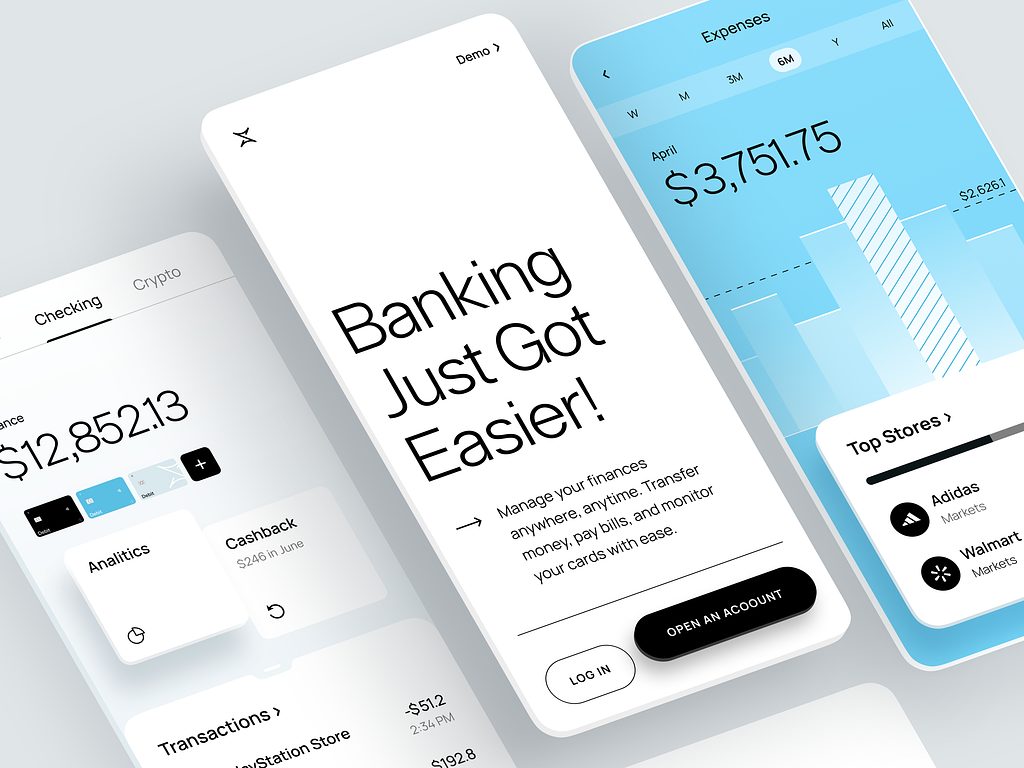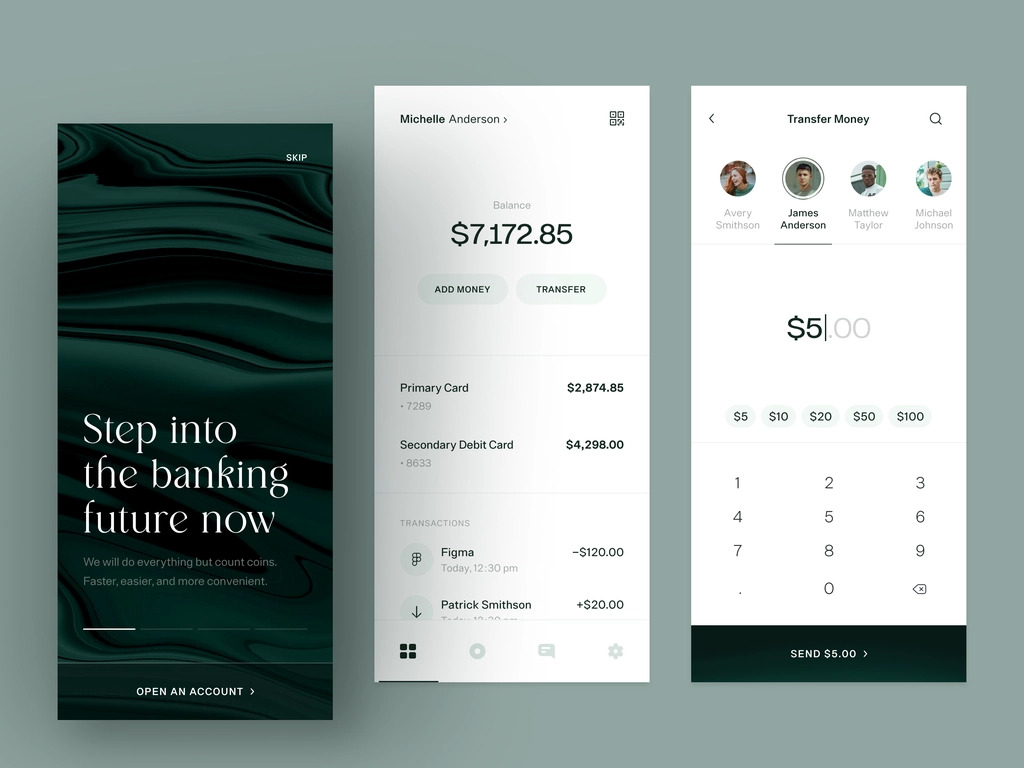Key points:
Contents:
- Understand your startup’s financial goals (both short-term and long-term);
- Gather and analyze relevant financial data (product development, legal fees, and branding);
- Categorize the cost estimations as one-time or recurring expenses;
- Create a realistic revenue projection and ROI;
- Leverage budgeting tools and software like project calculator;
Are you a startup founder or a dedicated product owner, brimming with innovative ideas and a relentless drive to disrupt the market? You’re not alone. The journey of bringing a groundbreaking product to life is riddled with challenges. Amid the excitement of creating, launching, and growing, there’s one aspect that often keeps you up at night: budgeting.
Picture this: you’re navigating through the complexities of product development, marketing strategies, and customer engagement, all while balancing limited resources and the constant pressure to deliver results. Your aspirations are sky-high, but your budget sometimes feels like a tether, holding you back from realizing your full potential.
Here’s the truth: startup budgeting isn’t a necessary evil; it’s your secret weapon to transforming your dreams into financial triumphs. In this article, we’re not just going to talk about numbers and spreadsheets; we’re diving into the heart of your startup’s financial journey. We’ll guide you through every step of creating a budget tailored to your unique needs, equipping you with the tools to conquer challenges, seize opportunities, and ultimately thrive in a competitive landscape.

Tweeq Mobile App Onboarding by Shakuro
Understand your startup‘s financial goals
Defining your startup’s financial objectives is the beginning of any budgeting journey. Whether it’s conquering the market or achieving profitability, your goals will shape all of your processes. Short-term and long-term objectives provide a roadmap for allocating resources effectively and measuring your progress. For instance, if your startup aims to break even within the first year, your budget will reflect the need for tighter cost controls and efficient resource allocation.
Identify key performance indicators (KPIs) that align with your goals. Then pick your company’s business model and revenue streams. This could be through product sales, subscription models, advertising, or other means. For instance, you can consider:
- E-commerce: selling products or services online through a website or marketplace. While initial setup costs can vary, e-commerce models can become expensive due to website development, marketing budgets for startups, and fulfillment costs.
- Subscription: providing ongoing products or services in exchange for a recurring fee. These models can be costly in terms of maintaining a high level of service, continuous content or product updates, and marketing efforts to attract subscribers.
- Marketplace: facilitating transactions between buyers and sellers on a platform. Attracting both buyers and sellers to create a balanced ecosystem, ensuring trust and safety, and managing disputes.
- Freemium: offering a basic version of the product for free and charging for premium features or upgrades. It can be difficult to convert free users into paying customers, avoiding a negative perception of the paid version.
- SaaS (Software as a Service): providing software, applications, or tools via the internet on a subscription basis. The challenge here is to deliver consistent updates and improvements.
- On-demand: connecting users with services or products on a real-time basis. You can have a hard time balancing supply and demand.
- Advertising: offering free content or services to users and generating revenue through advertising. While the initial cost might not be high, generating substantial traffic and maintaining user engagement can require ongoing investments.
Think about different pricing strategies and revenue sources that align with your business model. For example, Amazon is one of the world’s largest online marketplaces selling a wide range of products. Netflix offers a subscription-based streaming service for movies and TV shows. Dropbox has a free version of its cloud storage service with the option to upgrade for more storage and features. So, just keep your eyes open and you’ll find something suitable.
Last, but not the least, identify your target market and customer segments. Understand who your customers are, what problems your product solves for them, and why they would pay for it.

Mobile Banking Application Design by Shakuro
Gather and analyze relevant financial data
Before diving into budget creation, gather a wealth of financial data. Past expenses, projected revenue, and operating costs are key components. Organize this data by categories like operational expenses, marketing budgets for startups, and product development costs. Ensuring accurate and comprehensive data analysis is vital to make informed decisions about your startup’s financial trajectory.
So list out all the initial costs required to launch your ideas, such as project development, market research, legal fees, branding, and equipment. Analyzing your competitors’ budgets is also a good idea to gain insights into industry standards. Still, you don’t have to be a copycat.
Categorize your expenses
Organizing your expenses is like sorting puzzle pieces into a coherent picture. Categorize the cost estimations as one-time or recurring expenses. For example, there will be one-timers at the very beginning, such as legal fees for registration and initial development. Or buying machinery, computers, furniture, and expenses for a business. Recurring is essential for maintaining day-to-day operations and delivering products or services to customers. Monthly payments for office space, utilities, and other facilities. Regular wages and benefits for your staff.
These categories help you understand the financial flow and potential impact on your budget. Imagine you’re launching a new app; categorizing costs from development to launch will give you a clear view of your investment.
Equipment costs for startups can range anywhere from $10,000 to $125,000.
Fundera
Create a realistic revenue projection
You should also plan how much revenue and return on investment (ROI) you’ll get. ROI means how much profit or value your startup has generated relative to the initial investment. It is a crucial metric that helps investors and business owners evaluate efficiency. The formula is:
ROI = (Net Profit / Cost of Investment) * 100
Where:
- Net Profit = Total Earnings – Total Costs
- Cost of Investment = Total Initial Investment Cost
Estimating potential income is like navigating a maze. Market research and understanding your future customer base are essential. Different revenue streams, such as product sales, subscription models, service fees, and break-even analysis, contribute to your budget. As you progress, adjust your projections based on market feedback and changing customer preferences.
Of course, you need to protect your startup’s sales and revenue based on realistic assumptions and research data. Looking into a crystal ball and suggesting things won’t get you anywhere. Take into account seasonality, IT market trends, and potential growth.

Finance Management Mobile App by Conceptzilla
Set priorities and make capital allocation
Your startup’s success depends on your ability to prioritize and distribute resources strategically. Essential expenses take precedence over discretionary ones. If an issue has an impact on revenue generation and core operations, it comes first. Don’t forget to consider your startup’s unique needs and long-term goals. Balancing short-term operational needs with long-term growth plans ensures you’re not sacrificing tomorrow’s success for today’s convenience. However, sometimes, you will have to minimize pleasing but non-essential expenditures to keep essential functions going.
Try financial forecasting
In the startup world, the unexpected is the norm. That’s why planning a budget for a rainy day is crucial. Along with economical rollercoasters, there can be sudden market shifts or technology glitches. Aim for a buffer of at least 10-20% of your total budget.
Here, it’s a good idea to spy on your rivals or industry giants to check how they cope up with difficulties. Apart from snatching a few secret techniques, you can perform risk assessments and identify specific risk areas for your company.
Monitor and adjust your budget regularly
Your startup budget isn’t a static document; it’s a living tool that evolves with your company. Regular financial modeling and adjustments keep your resources aligned with your goals. So review your budget from time to time, compare actual performance to projections, and make necessary changes. Flexibility in budget management ensures you stay agile in response to changing market dynamics.
Cash flow is as important as digital currency fluctuations. Monitor your cash by tracking the timing of incoming revenues and outgoing expenses. You should also be ready for potential cash flow gaps and explore financing options if needed.
Restaurants, medical offices, and manufacturing industries are the most costly small businesses and startups to create, requiring more than $100,000 to get started.
Leverage budgeting tools and software
In the digital age, technology is your ally. Explore various budgeting tools and software designed to streamline the process. You can take advantage of various features such as expense tracking, revenue projection, and performance analysis. They not only save time but also enhance accuracy in your financial planning. Excel or Google is fine, but we suggest tools like QuickBooks, FreshBooks, or dedicated startup budgeting apps.
Don’t forget about AI and smart algorithms. Some of them like ChatGPT, are free to use and have versatile options perfect for planning a budget. Massive data analysis, market predictions, tendencies, insights, etc.
If you want to see how much your project might cost, check out our project calculator. There are different routes for branding, development, and UI/UX design.

Finance Management Mobile App by Shakuro
Seek professional advice
Navigating the financial landscape of startups can be complex. Seeking help from financial experts or angel investors provides fresh insights and prevents costly missteps. Their experience can help you refine your budget, make informed decisions, and navigate potential pitfalls.
Angel investors are individuals who provide financial support and often mentorship to early-stage startups in exchange for ownership equity or convertible debt. They are typically experienced entrepreneurs, business professionals, or high-net-worth individuals who seek to invest their venture capital into promising startups with the hope of generating substantial returns on their investments in the future.
Conclusion
Creating a startup budget is a challenging but powerful exercise that shapes the destiny of your venture. From understanding your goals to embracing contingencies, each step contributes to your financial success.
Budgeting isn’t just about numbers; it’s about turning dreams into reality. Budgeting isn’t a chore; it’s a strategic opportunity. Embrace it as a vital aspect of your startup’s journey, enabling you to shape your path to success. As you navigate the intricate world of finances, remember that your budget isn’t just numbers on a spreadsheet — it’s the fuel that propels your dreams forward.
Do you need to create an app at an affordable cost? Reach out to us and let’s build a versatile project.

